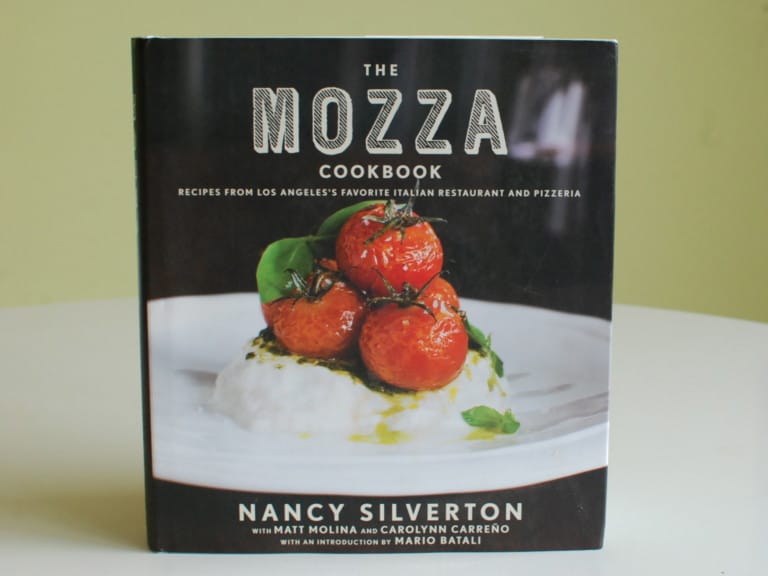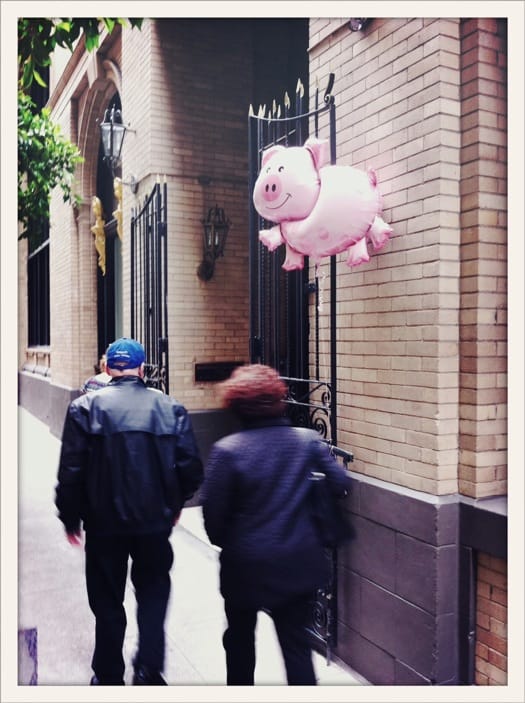A few months ago, a panel of culinary luminaries gathered at UCLA’s Hammer Museum to discuss a seminal question for L.A.’s burgeoning food scene. It was simple: What is Los Angeles Food? Apparently cities like San Francisco, New York, and Chicago have great culinary traditions and easily recognizable “styles” that translate around the world. Think Chicago-style hotdogs, New York-style pizza or San Francisco-style fine dining.
If these cities have recognizable dishes and cuisine, then what is Los Angeles-style cuisine? Local food demigod Jonathan Gold moderated a panel of three chefs, Octavio Becerra of Palate Food & Wine, Michael Cimarusti of Providence, and Evan Kleiman of Angeli Caffe and KCRW’s “Good Food” to hone in on two major characteristics of L.A.’s unique food culture: the use of sustainable produce evidenced by a wealth of high-quality ingredients, and the influence of ethnic cuisines from around the Pacific Rim and the rest of the world.
I’ll say now that I plan to follow up this article by detailing the latter part of that conclusion, which I believe is the hallmark of L.A.’s food scene. But first, I’ll tackle what the panel spent most of the hour discussing: the use of sustainable and local ingredients to impel and characterize the approach that cooks and chefs have toward food in this city.
It’s easy to come to this conclusion if it’s consistent with the national purview of the ideal American cuisine. Michael Pollan’s influential book, The Omnivore’s Dilemma, and subsequent articles in the New York Times have largely worked to reorient the public’s opinion on where food is sourced and how we as the wealthiest and most prosperous nation in the world go about directing our efforts toward a more sustainable, biodynamic approach to food.
In a way it’s really just Alice Waters’ mantra of the past 35 years repackaged and more smartly politicized for this century. I can attest to their philosophical similarity based on Pollan’s frequenting of Waters’ Chez Panisse Restaurant in Berkeley, as my cousin who used to work the reservation lines once mentioned to me, “some famous food writer (Pollan) would call in very often.” Of course that isn’t the only glaring evidence that they share the same view, but in essence Pollan has just better communicated the viewpoint through words instead of Waters’ approach through dishes in her celebrated restaurant. While small pockets of America accept this approach to food, like Berkeley, Portland, and certain sections of New England, the rest of America has neither the means nor desire to truly pursue the Waters/Pollan idealism. I say idealism because when the rubber meets the road, when America’s millions of families and individuals pull out their credit cards and cash for food, it’ll still inevitably run toward the frozen, the fast (food), and the processed.
Even more dubious is this claim for L.A. when establishments like The Cheesecake Factory and Yard House are, year-in and year-out, the city’s most popular restaurants in the stodgy Zagat guide. Just go to The Grove any night and you’ll see a multi-hour line at the Cheesecake Factory. If you still don’t believe me, try going to Beverly Hills, the so-called pinnacle of Los Angeles culture and find countless restaurants that serve run-of-the-mill cuisine geared toward the wealthy and the tourist.
Of course, Gold and essentially Kleiman’s forceful assertion that Los Angeles’ cuisine is undoubtedly the high-quality produce seems unlikely, even in some of L.A.’s well-known restaurants among the local food cognoscenti. Few restaurants boast market-fresh ingredients in a way that consumers truly value. I walked into Judi’s Deli in Beverly Hills every week where they would blatantly display the venerable Niman Ranch‘s products. No one except myself cared or even knew a lick about Niman Ranch and their approach toward raising sustainable livestock. Notable restaurants like Lucques or Spago, which gain a lot of recognition and press, certainly do pursue these high-quality ingredients but their styles and approach are neither endemic nor signature of Los Angeles dining.
While many establishments certainly use farmers’ market produce, much of the worthwhile ingredients are only available at the Hollywood or Santa Monicas markets, a mere 10-15 collective hours of prime picking. The other markets feature good to excellent quality produce that any major city could replicate with modern agricultural techniques. Even with multi-day trips through the country, modern horticultural methods have produced heartier though often more tasteless produce to withstand long truck journeys. L.A. receives the same produce as Milwaukee, but with a few less days bouncing around on an 18-wheeler. The difference might be that L..A’s produce is invariably fresher since the produce has only traveled a few hundred miles instead of a few thousand miles, but consumers aren’t relishing this fact in L.A. like it’s a big deal. If anything, I’ve had hundreds of meals where the handling and care of this produce would’ve meant an equally unsatisfying experience were it in Alabama or Colorado. Angelenos certainly do love their high-quality produce, but many cities could make such a claim and could certainly make it better than L.A. I remember having fabulously good produce in New York City and it’s not like they’re claiming that it’s the reason why their food is so special.
Farmers’ markets aside, finding high-quality ingredients in the local L.A. supermarket is a tougher affair, unless of course you’re at one of L.A.’s supreme ethnic grocery stores where the words “organic” and “sustainable” fall by the wayside, replaced by signs like “3 pounds for $1” and “Special Discount Sale.” Sure, consumers at Westside supermarkets in Brentwood and Santa Monica like their high-quality produce at a premium, but it’s not like the shoppers at 99 Ranch in San Gabriel Valley or Koreatown Galleria Market value produce any less. In fact, they use even more produce in their respective ethnic cuisines than the average American family.
So does Los Angeles really regard itself so highly that it contends to define itself with “sustainable” and high-quality produce? Not by a long shot. The tiny microcosm of Berkeley’s Monterey Market and Berkeley Bowl could outdo even the Santa Monica and Hollywood Farmers’ markets for quality and selection, easily. Name 20 different apple varieties; I can’t, but Berkeley Bowl has that many on any given autumn day. It isn’t just the chefs and cooks that see the value of these ingredients in Berkeley or Portland, but the consumers. While L.A. diners haven’t completely disregarded this aspect of the current food-political milieu, they’re not latching on at quite the rate that the upper crust would like.
The jargon and subculture of “Slow Food” and sustainable ingredients amid the excesses of industrialized agriculture hasn’t produced bastions of supporters and followers. Despite the tepid response in mainstream L.A., a few continue to preach this gospel. It’s definitely a worthy message, one that Angelenos are well-poised to engender as distinctively LA-style. This city is still forward-looking, as it sheds fads like pieces of hipster clothing and embraces aspects of sustainable produce and ingredients for its health and environmental benefits. The tide is turning. But that movement will only be sustained if people agree with the philosophical undergirding of sustainable food, if people truly believe that this approach is better for our bodies, families, and the environment.
We’ll have to wait and see how L.A.’s food scene pans out in the next few years, but until then, one should enjoy the real fruits of L.A.’s culinary character – distinctive, (often, though not rigidly) authentic, celebrated, and established ethnic cuisines which span multitudes of cultures around the globe. Evidenced by one blog (Man Bites World), the strength of L.A.’s cooking and restaurants, its main fanfare and hallmark, is the pastiche of food cultures both widespread and deep in enclaves of East Asian, Southeast Asian, South American, Central American, and other communities across the sprawling metropolis. For the serious eater, for the curious diner, it would take a century to delve through the outstanding quality and quantity of these establishments. That the world brings their kitchens, stomachs, and palates to this city in such diversity is more profoundly L.A.’s defining food characteristic than principles of Slow Food and sustainability. We’ll explore how these ethnic enclaves and outposts throughout the city have exerted their influence on the local and national food scene in the next installment of Matthew Kang’s Food Insights.









Blog Comments
Mario A.
May 15, 2009 at 11:57 PM
The real cuisine is in the millions of kitchens everywhere; yet truly, truly Mexican cuisine has been around since the beginning in this fast town. Beans, corns, meats, tortillas, salsas, guacamoles, margaritas, mole, ole’!
Matt
December 3, 2008 at 11:27 AM
Great write up Matt. I was at the same discussion, and while I agree that they spent some time focusing on organic, farm fresh, sustainable type of cooking. I also feel like they spent a good deal of time speaking up the fact that we are a melting pot of cultures. And our access to shipping ports, diverse communities, ethnic markets, and ultimately, our cuisine reflect that. Cimarusti said he spends a lot of time checking out new and exciting produce at various ethnic markets around town, namely a large market in K-town and Mitsuwa downtown.
I feel like that large scope of ethnic pockets around LA represents LA food more than, what Gold pointed out, was a Los Angeles burrito he saw on a menu in Cleveland had sprouts and sun flower seeds in it.
Unfortunately, Hollywood’s low fat, organic, macrobiotic, natural, and local food fanfare steals the limelight away from what real Los Angeles food is.